April 21-24, 2010
To go Back at any time,
use Browser’s “Previous Page”
Departing Knoxville, we zig-zagged north to reach Cumberland Gap National Historical Park. The historic pass in this Park is located at the very western tip of Virginia near the point where Tennessee, Kentucky and Virginia meet. These days, with our modern highways, it is hard for us to imagine what an impenetrable wall the Appalachian Mountains were in the 1770’s for those on foot or horseback. Six hundred miles long and one hundred fifty miles wide, the Appalachians provided precious few natural crossing points. Cumberland Gap was one of those rare natural corridors through the Appalachians --- and we wanted to see it.
Before experiencing the Park, we visited two towns, Harrogate TN and Middlesboro KY, which were named for towns in England. They practically straddle the Park, one on each side.
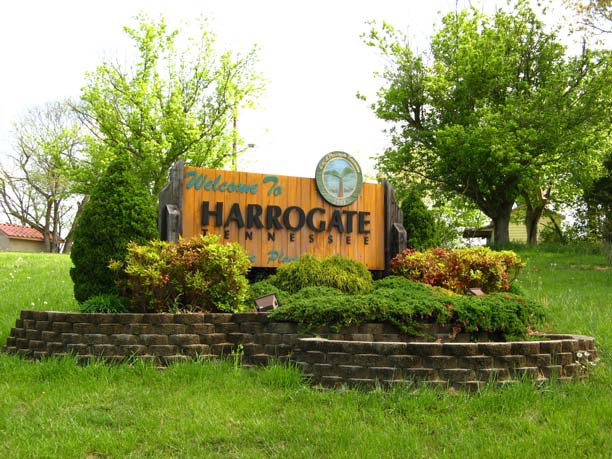
Having lived in Harrogate, England, for over 3 years, we have long been aware of Harrogate TN and have wondered about its name. What we learned was that British investment funds were involved in establishing both towns around 1888. Middlesboro was founded to develop iron ore and coal resources whereas a spa town was envisioned for Harrogate similar to that of its British namesake. A grand 700-room resort hotel was even constructed in Harrogate but it was short-lived. The combination of poor quality iron ore and the 1893 stock market decline doomed the investors’ plans. However, coal mining went on, eventually attracting the railroad and ensuring the continued existence of both towns. Later, Lincoln Memorial University was chartered and built on the resort property in Harrogate, further strengthening its economy.
There really is nothing unique about modern Harrogate TN that we could see --- it appears as just another small Tennessee town with rural outskirts:
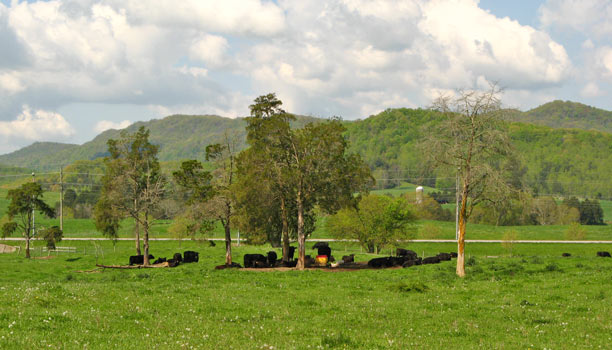
At least, we now understand the reason for its intriguing name.
Speaking of names, none is more associated with Cumberland Gap and the opening of the West (aka, “Kaintuck”) than Daniel Boone’s. In 1775 --- 5 years after a surveyor named Thomas Walker published accounts of the gap’s existence --- Boone and others blazed a trail through the gap, opening Kentucky lands to settlers. And, my, did they come: from 1780 - 1810 between 200,000 and 300,000 people crossed the gap, most on foot, into Kaintuck!
A drive up Pinnacle Road gave us a panoramic view looking west, not unlike what might have been seen from here some 200 years ago:
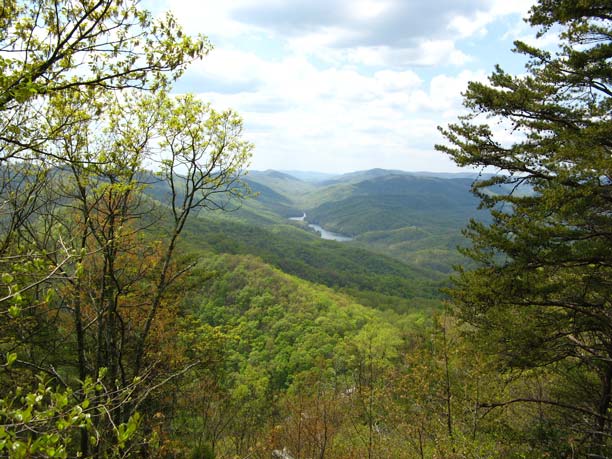
Descending the road part way, we then hiked to the very saddle of the gap. In the view below, it is just around the corner:
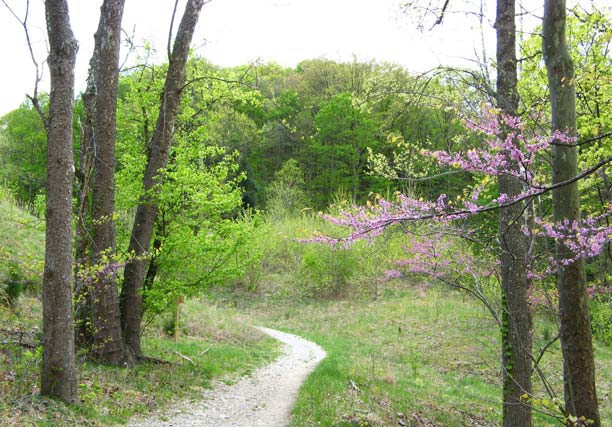
and here it is!
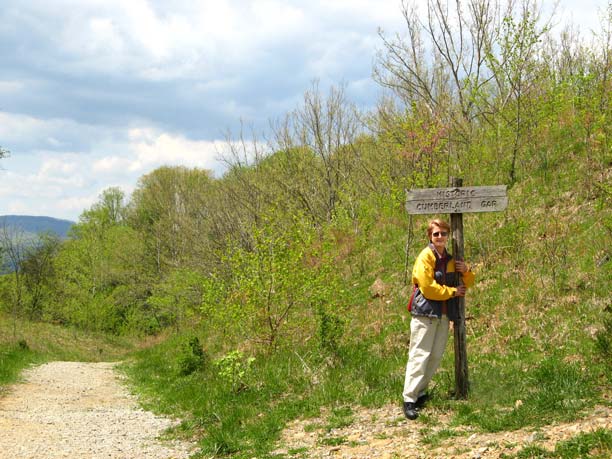
The marker is just over Patty’s head --- in case you missed it.
We tried to picture Daniel Boone and other pioneers approaching this saddle with trepidation and high hopes:
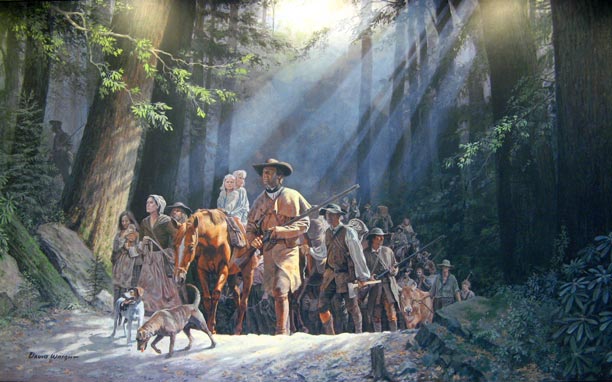
but without the dense forest, their approach was a challenge to imagine.
There is no dense forest today at the saddle or anywhere near the gap for a very simple reason. For many years US Hwy 25 (and predecessor roads) passed right over the gap. When the Park was authorized in 1940, it was the intent to someday remove the highway and restore the natural terrain. At last, in 1996, US 25 was rerouted through a newly opened tunnel under the gap. A few years later, the restoration was completed using rock excavated from the tunnel. Although replanting was accomplished by 2002, it will take a generation before any semblance of the forest depicted above will exist. Maybe then it will be easier to imagine the waves of pioneers that poured through Cumberland Gap in search of new lands.
As a consolation, we did see hard evidence nearby that Daniel Boone had, indeed, passed this way:
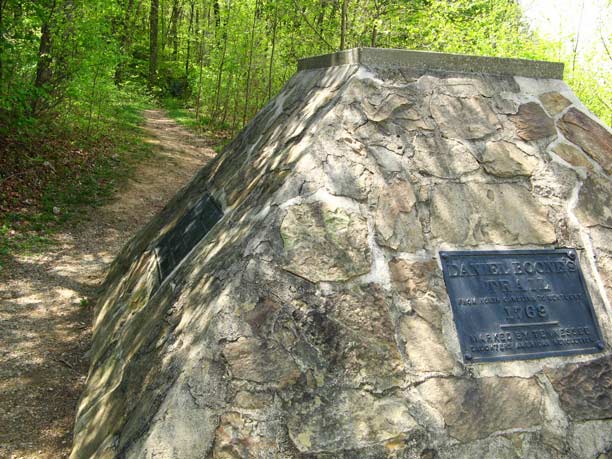
On the following morning, we explored Natural Tunnel State Park in western Virginia. The 200 foot long tunnel in this Park has been a tourist attraction for well over 100 years. It was appreciated early on that the tunnel’s diameter was large enough for a locomotive to pass through. Well, you guessed it: that’s exactly what happened in 1893! A fair amount of stone and some concrete had to be brought in for the rail bed but only a little modification to the tunnel roof was necessary. The tracks are still active --- we read that about ten trainloads of coal pass through the tunnel each day.
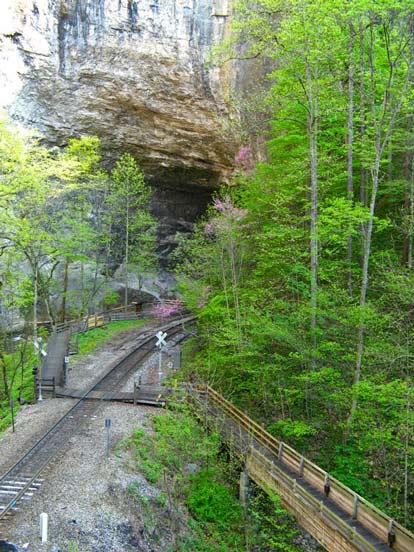
These trains must pass through slowly because the track has a tight “S-curve” as it exits the tunnel.
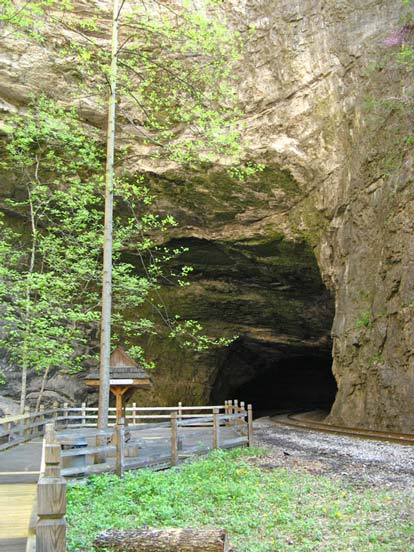
Although no train passed during our visit, we think it would be an unnerving experience to be standing at the tunnel exit as an oncoming train emerges --- even a slow one.
In the days when trains carried passengers through the tunnel, its novelty led to the practice of letting passengers disembark to see this wonder at close hand and gawk at the incredible amphitheater at the tunnel’s exit. Moreover, we read, there were even dances for passengers at a pavilion near the tunnel!
It is sad to our way of thinking to see this natural marvel marred by train tracks. Having just the day before learned how earlier exploitation of a natural feature could be erased, we wondered if, one day, these tracks might also be removed and the creek given free rein through the tunnel again. A ranger we talked with gave us no hope that such a restoration would ever occur but, as they say, never say “Never.”
Downstream of the tunnel, here’s the little creek that “could:”
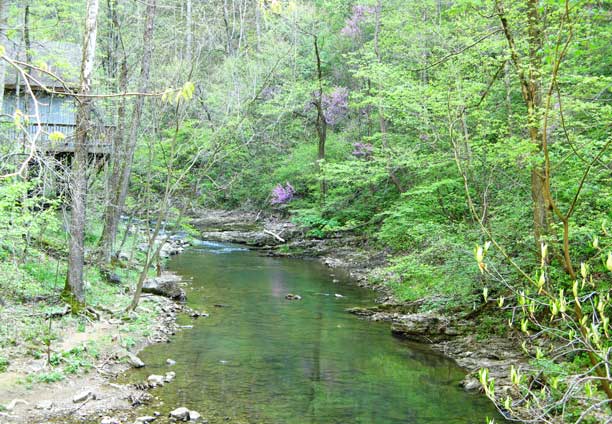
Oh, yes, the climb back up is a long one. That’s why a cable car operates during the summer season.
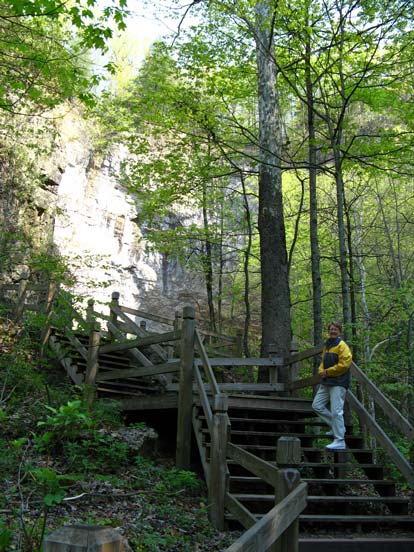
The photo above also gives some idea how high and steep the amphitheater walls are.
A short drive from our overnight stop in Beckley WV brought us to the New River Gorge near Fayetteville WV. When completed in 1977, the New River Bridge was the longest single-arch steel bridge in the world (it may be only #3 now):
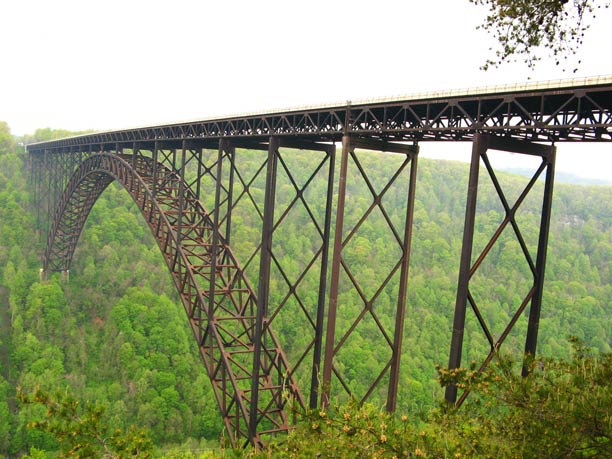
It rises 876 feet above the river and shortens a car trip across the river to just 45 seconds. Every October during the “Bridge Day” festival, vehicular access is denied travelers to allow rappelling, ascending and BASE jumping. Car drivers --- at least in one direction --- can still use the old bridge far below although that crossing can take about 45 minutes.
The old bridge down near the river is visible in this view along the canyon:
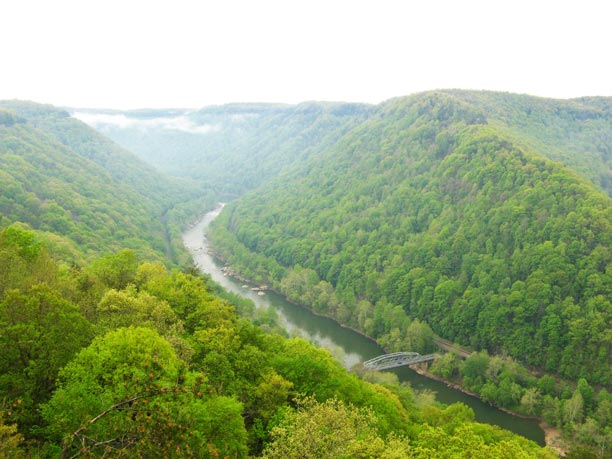
After nearly six weeks away from home, these two travelers are, no doubt, wondering if they can deal with a normal life again.
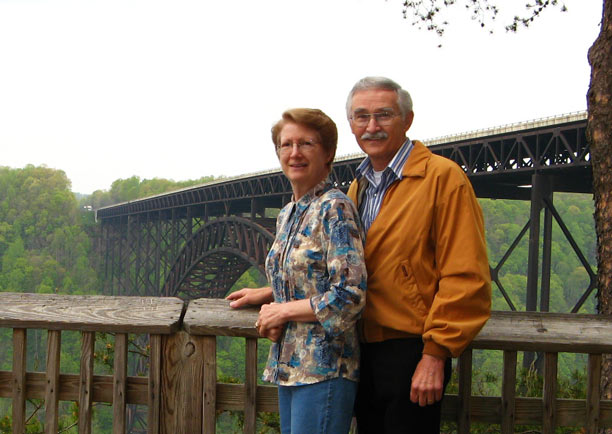
Our last night on the road was spent in Elkins WV, home to several music, art and heritage festivals throughout the year. The American Mountain Theater is also located in Elkins. To wrap up this long journey, we spent an entertaining evening at the theater, enjoying country, southern gospel, pop, bluegrass and patriotic music as well as several comedy and variety acts.
Driving home from Elkins was fairly easy with little rain despite the gloomy forecast. Our one “tourist” stop on the way was near Davis WV at Blackwater Falls State Park. The Park is home to a much-photographed, 62-foot cascade on the Blackwater River:
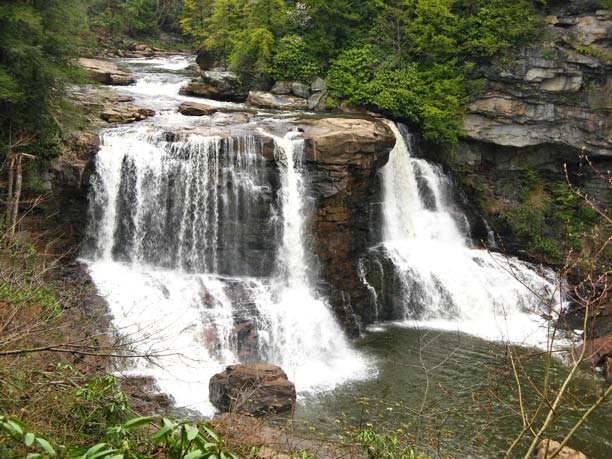
The river is so-named from the color of its water, which has been darkened by tannic acid.
After 5500 miles of safe driving, all we can say is, “Thank the good Lord!” We are happy to be home, our wanderlust temporarily satisfied. Home is as we left it and, sooner or later, we’ll get back to a normal life.
By spending so much time traveling from south to north these past weeks, we have been enjoying an extended Spring. State College looks lovely with blossoms and new leaves everywhere. Winter has definitely been banished during our absence.
------------------ Epilogue ------------------
Sadly, about 2 1/2 weeks after we left Nashville, flash flooding caused the Cumberland River to overflow, inundating several of the beautiful places we had visited so recently. It will be quite a while before this damage is repaired and the “show goes on again.” Below are two news photos dated May 4 and 5. The first shows how widespread was the flooding in the Opryland area. The second shows flood waters in one of the gardens at the Gaylord Opryland Resort, not due to reopen before November 2010. Parts of downtown Nashville were also flooded.
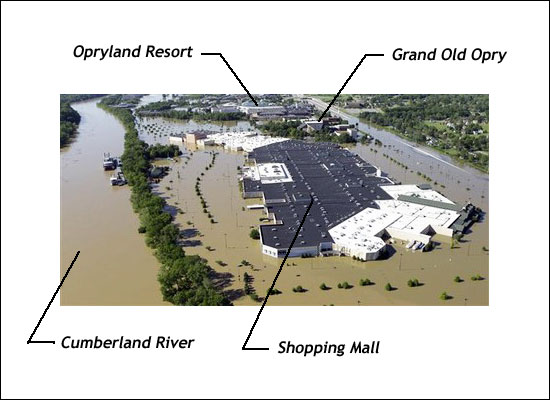
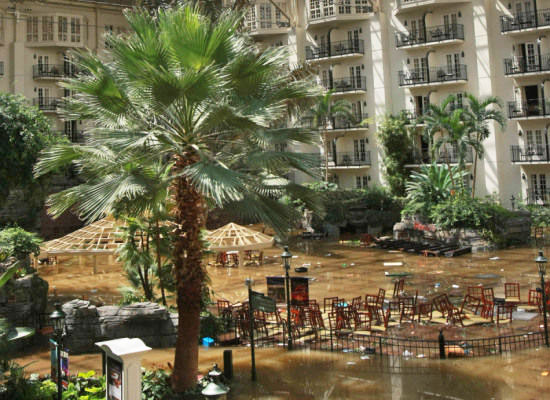
Sometimes, the one sure thing about life seems to be its unpredictability.
